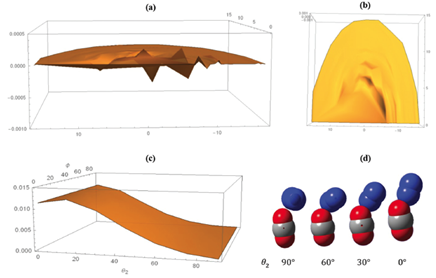Research Fellow, RSC, Australian National University, 1998-2000; Postdoc. Fellow, RSC, Australian National University, 1996-1998; Postdoc. Research, Ohio State University, 1994-1996; Postdoc. Research, ETH, Zurich, 1992-1994; Ph.D., Monash University, 1992; B.Sc., University of Queensland, 1986.
Contact Information:
Office: MD1-05-03C
Tel: (65)-6516-2846
Fax: (65)-6779-1691
Email: chmbrpa@nus.edu.sg
My research area is in the understanding and accurate description, via computational chemistry, of inter- and intra-molecular interactions. Ultimately the understanding and description will be applied to the dynamics of large systems like proteins, nucleic acids and bulk matter. Specific foci are:
Ref: Wang, H.; Bettens, R. P. A., Modelling Potential Energy Surfaces for Small Clusters Using Shepard Interpolation with Gaussian-Form Nodal Functions. Phys. Chem. Chem. Phys. 2019, 21, 4513-4522. In the highlighted paper we examined a novel approach to accurately predicting the potential energy surface (PES) of a chemical system when a nuclear configuration is given as input. The PESs of small atmospheric clusters have theoretical as well as environmental significance. A common method used to generate analytical PESs is the Shepard interpolation, where the PES is a weighed sum of Taylor series expansions (nodal functions) at ab initio sample points. Based on this, we presented a new method based on the Shepard interpolation, where the nodal functions are composed of a symmetric Gaussian term and an asymmetric exponential term in each dimension. Corresponding sampling methods were also developed. We tested the method on several atmospheric bimolecular clusters and achieved root mean square errors (RMSE) below 0.13 kJ mol-1 in 150 samples for Ar–rigid H2O and Ne–rigid CO2, and below 0.39 kJ mol-1 in 1800 samples for rigid N2–rigid CO2.
Below: Error of the estimated PES of CO2–N2. (a) Plot of error on a 200-point test set against R and θ1 of the test points. Energy in Eh. Box dimensions in a0. (b) The top view of the error plot; (c) ab initio energy of configurations with R = 7.25a0, θ1 = 30°. The energy is sensitive to θ1 much more than to ∅. (d) Space-filling models of configurations with R = 7.25a0, θ1 = 30°, ∅=60° and various θ2 using van der Waals radii. Both colliding and non-colliding configurations are present.
